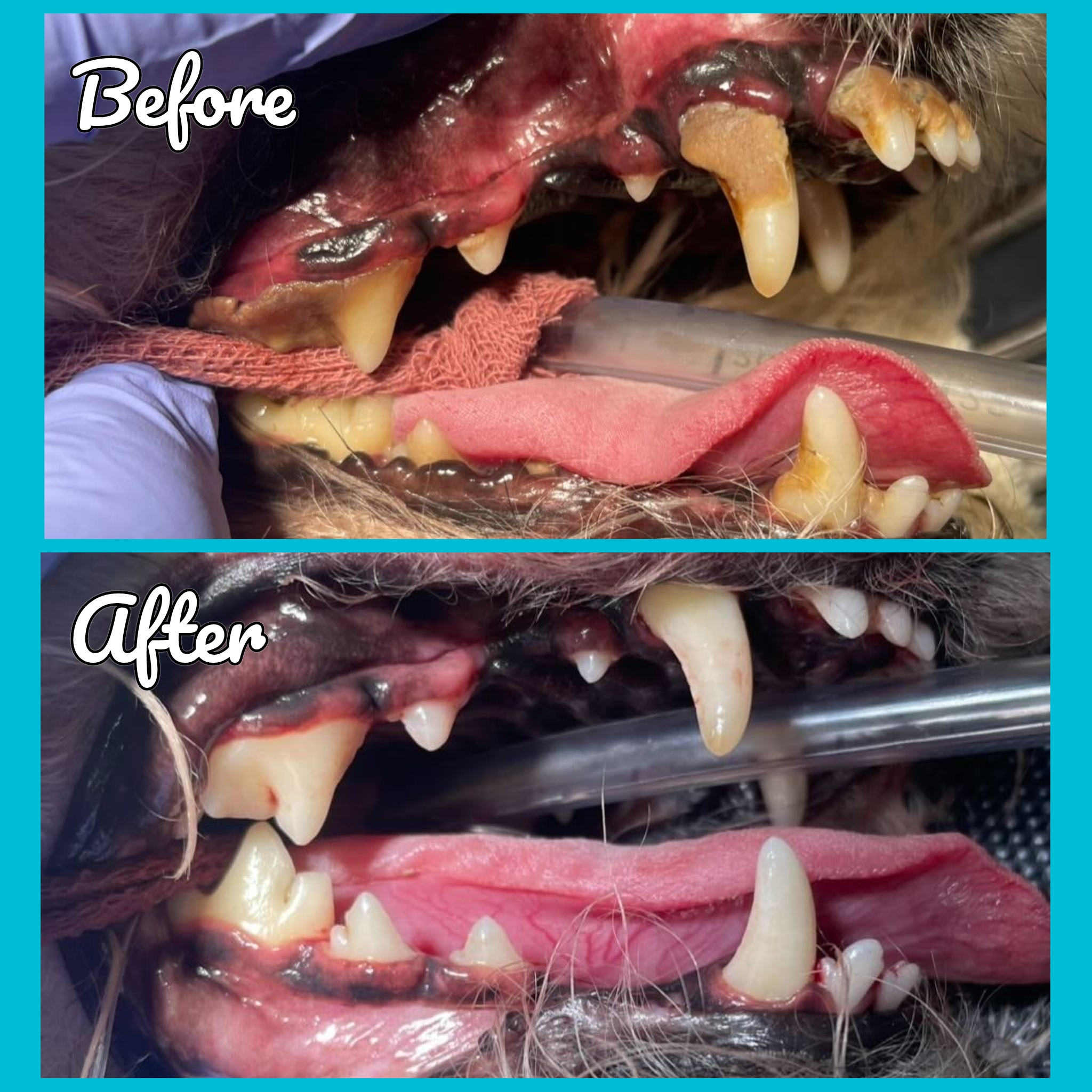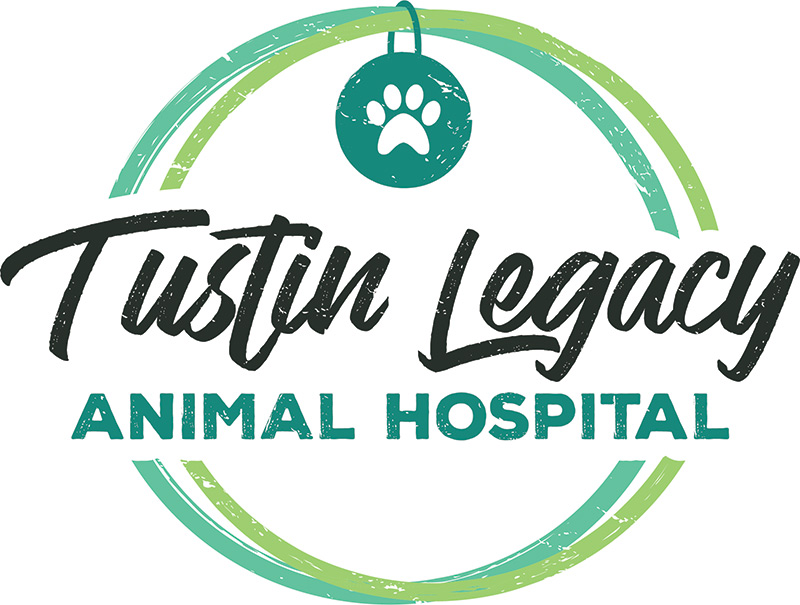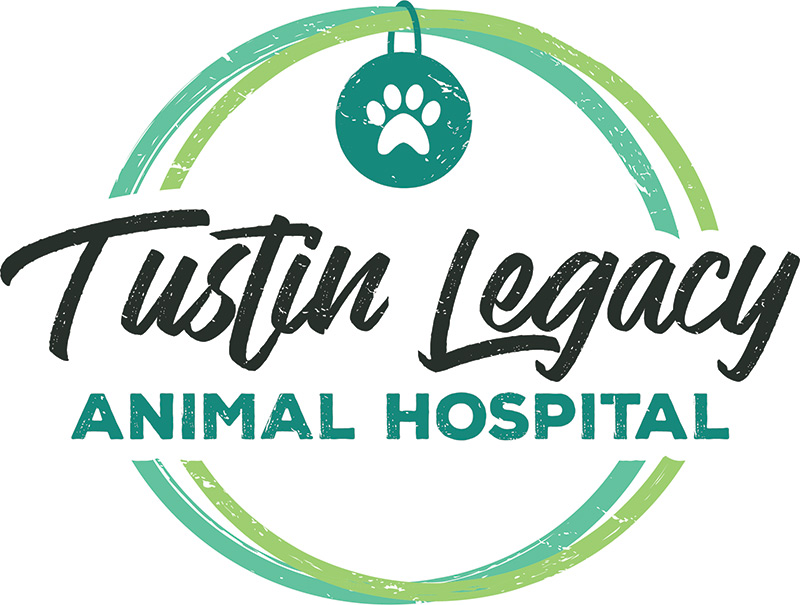Dentistry
Veterinary ServicesOur veterinary team takes every precaution so that your pet receives the highest-quality care at our hospital.
Dentistry at
Tustin Legacy Animal Hospital
Our team of veterinarians and veterinary technicians is skilled in using anesthesia and monitoring patients to ensure their safety and provide the most comfortable experience.
Why Routine Dental Cleanings are essential for pet health:
- 80% of dogs and cats develop periodontal disease by the age of 3 years
- Dental disease can contribute to other pathologies (medical abnormalities) in the body and if left unchecked for too long can have fatal consequences
- In cats, plaque and calculus build-up can lead to an auto-immune response called stomatitis where the body attacks the oral tissues
- It provides opportunity for your vet to thoroughly check your pet’s mouth for oral masses or other abnormalities; something which is difficult to do when your pet is awake
- Plaque and calculus on the teeth can lead to halitosis (bad breath)

Periodontal Disease
Periodontal disease is an infectious and inflammatory response of the periodontium, or the tissues surrounding the teeth, to plaque bacteria. It starts with the attachment of bacteria to the surface of the tooth and surrounding gingiva (gum tissues). The bacteria produce toxins which injure the periodontium, and if left unchecked, will continue to spread to the tissue and bone surrounding the tooth root and can cause destruction of the connective tissue holding the tooth in place. Over time, the plaque will harden into a calcified block called calculus which will appear both on the crown (visible part) of the tooth as well as under the gumline. This has two detrimental effects: it introduces bacteria into the already damaged gingiva, which will be carried via the bloodstream throughout the body leading to systemic disease; and loosens the tooth in its socket, causing pain. It is recommended to perform complete dental prophylaxis (anesthetic dental cleaning) on your cat or dog annually, as well as practice good dental hygiene for your pets at home.
Tooth brushing daily is the gold standard, but other home care options include VOHC recommended dental chews daily, Veterinary Dental Diets, plaque-reducing water additives, or any combination of these. When you bring your pet in for an exam, our doctors and techs can work with you to build a home dental care plan that fits you and your pet’s needs.
A Step-By-Step Look at how dental prophylaxis are performed at TLAH!
First, the doctor will perform a physical exam on your pet’s mouth to establish any obvious periodontal disease or tooth pathologies that will need to be addressed during the cleaning. Before the dental gets started, a pre-anesthetic lab panel will need to be performed to make sure that your pet is healthy and has no underlying issues that would preclude them from being safely anesthetized. If the bloodwork comes back normal, the dental cleaning can begin.
Before the dental begins, your pet will receive a sedative/pain injection which will make them less stressed and allow the technician to place an IV catheter for administering fluids as well as other medications throughout the dental. We make sure that every pet receives IV fluids during their anesthetic procedure to support the kidneys and keep blood pressure stable throughout the procedure.
Then we move onto the cleaning! The first step is to examine the entire mouth looking at the gums, crowns of the teeth, and oral tissues to evaluate any abnormalities. We will then use an instrument to probe around each tooth, checking for periodontal pockets. These are the spaces between the tooth and gum that surrounds it. In cats, the normal pocket depth is 0-1mm and in dogs the normal pocket depth is between 1-3 mm. Once we have probed every tooth and written the measurements in the chart, we will move on to full-mouth dental x-rays.
X-rays are performed with every dental because teeth, similar to icebergs, have much of their mass below the surface. The crowns of the teeth can be white and shiny, but under the gumline could be a different story. When we x-ray the teeth, we are looking for the tooth root, the attachment to the jaw bone, and the pulp of the tooth.
Once x-rays are done, the actual cleaning can start. Just like us, dogs and cats have their teeth cleaned using an ultrasonic scaler (the high-pitched whiny sounding instrument that we all hate hearing at the dentist. Aren’t our pets lucky that they’re asleep?) to remove the plaque and calculus build-up on the teeth. It is very important to clean the entire surface of the crown, as well as under the gumline where more plaque and bacteria hide. After scaling, we use the polisher to smooth out the surface of the teeth. Ultrasonic scaling is great at cleaning but can also leave microscopic grooves on the surface of the teeth. This is why we use the polisher and special toothpaste to smooth the surface of the teeth, which also makes it more difficult for bacteria and plaque to reattach to the tooth. After the polishing, we rinse the mouth with an antibacterial rinse and if the pet doesn’t need any extractions, they are woken up and monitored by the technician until they are wide awake.
Tooth Extractions
Teeth can need to be removed for several different reasons, which include fractures with pulp (the inside chamber of the tooth where the blood supply and nerve endings are) exposure, bone/gingival attachment loss, trauma which has caused the tooth to die, or cavities/resorptive lesions. The extractions are performed either by the veterinarian, or a well-trained Registered Veterinary Technician (RVT).

